Uniform blog/The Digital Experience Platform in a Jamstack world
The Digital Experience Platform in a Jamstack world
The Digital Experience Platform in a Jamstack world
Challenges that brands have struggled with for years — including slow time-to-market, slow performance, weak security, and limited scalability — can be addressed with a new generation of technologies described as Jamstack. Even if a large brand were willing to drop a decade’s worth of investments to re-platform, Jamstack does not offer a complete MarTech solution. Uniform fills the gaps and enables brands to embrace the Jamstack approach without having to compromise on the marketing features they depend on.
Once upon a time…
Beginning around 2010, content management system (CMS) vendors began to tell a story of a fascinating future that was now within reach for brands. In this future, brands could create unique, personalized experiences for each and every one of their customers. This was going to increase the level of engagement between the brand and its customers, which would increase customer loyalty and lead to more profits.
This would be possible because vendors offered suites that provided everything the customer needed to make this happen. CMS, personalization, testing, analytics, marketing automation, etc. were all parts of the suite. This was a new category of products that would become known as the digital experience platform (DXP).
And they both lived happily ever after…
The suite approach was a good fit for many brands. Many brands in the mid-market were not already heavily invested in separate best-of-breed technologies. Additionally, most of the purchasing decisions were driven by marketing budgets, so focusing on a single-platform strategy could reduce technical complexity and dependence on IT resources.
But life was not as perfect as it seemed…
Many brands learned that using technology to optimize experiences requires much more than a DXP. It requires people, process, and organizational commitment. This is such a significant impediment that most brands end up using only a few of the capabilities they bought in the first place.
In addition, marketers often found the tools available in the suite to be unsuited for their needs. The compromise of the suite is that you get a wide variety of features, but those features aren’t best-in-breed. They are good enough.
But often they weren’t. They were too complicated or too simplistic. Marketers were unable to get their work done with them, so marketers looked elsewhere and found tools that worked for them. Ironically, this created the exact kind of complexity the suite was supposed to eliminate.
Then new challenges arose that were not anticipated…
In 2020, brands are faced with challenges that suites were never designed to face.
- Performance — Site delivery for most DXPs requires an expensive (i.e. slow) call to an application server. Not only is this call slow, but as the number of visitors accessing the site increases, the load on the server increases, compounding the slowness.
- Scalability — Most DXPs allow you to add servers to handle increases in load, but this kind of scaling is often complex, difficult, and/or costly. In addition, automatic scaling may not happen quickly enough to handle a traffic spike as it happens.
- Integration — Most brands are using additional tools, if not to completely replace the tools offered by the suite, to supplement them. This often creates the kinds of data silos DXPs were supposed to eliminate.
- Privacy — Legislation is changing the way experiences are optimized. Many DXPs were designed to collect all possible information. Essential concepts of trust and value exchange simply don’t exist in those systems.
- Technology changes — The technology used to build a suite may have been popular 10 years ago. Back then, finding people with experience with that technology would not be hard. Today, that technology may be much less popular. Finding people with experience may be much more difficult.
New opportunities arose that suites cannot exploit…
In 2020, brands are faced with opportunities that were unavailable when the DXP suites were designed.
- JavaScript won the web — Proprietary scripting languages built on .NET and Java have given way to front-end frameworks built on JavaScript. Server-side logic can also be written using JavaScript.
- Static sites do not have to compromise on visitor experience — The browser is a powerful application engine. Dynamic content and personalization can be handled on the browser, instead of on the origin. The need for an expensive, slow, insecure application server that generates dynamic content for each visitor is largely eliminated.
- CDNs enable global, fast, cheap deployment — CDNs are incorporated into DevOps processes, freeing brands from having to configure their own change management processes. CDNs also free brands from having to manage most aspects of scaling, which are among the most complex and difficult parts of web application management.
This is the Jamstack…
These opportunities are often described using the name Jamstack. Sites built using a Jamstack approach take advantage of the benefits of the modern web.
- JavaScript
— website logic is written using JavaScript. - APIs
— website incorporates functionality from services using APIs. - Markup
— website markup is generated at build time (as opposed to markup being generated on the origin at runtime).
Developers have recognized Jamstack as a solution to problems related to performance, scalability, and DevOps. Jamstack doesn’t require any specific product or vendor. This means developers can use the right tool for the job. These are just some of the factors that drive Jamstack popularity.
Brands in small and mid-markets have been adopting JAMstack with success. It offers them clear benefits in terms of fast time-to-market and low operational costs. This is largely the world of Wordpress sites.
Enterprise brands have been unable to embrace JAMstack fully…
Brands using DXP products from vendors like Adobe, Salesforce, IBM, Sitecore, Oracle, Open Text, Acquia, and Episerver are still in the “kicking the tires” stage of adopting JAMstack. They see that JAMstack can solve some real problems they have today, but they also see some major obstacles to its widespread adoption.
- Essential tools aren’t supported — The average enterprise organization currently uses
. Few of these tools are natively compatible with JAMstack. These are tools that marketers depend on to do their jobs. - Re-platforming isn’t an option — Even with everyone onboard, re-platforming is an expensive, multi-year effort. Getting everyone on board is often a delicate, highly political endeavor.
Enterprise brands need something different…
The pendulum has been swinging back and forth between IT-focused solutions and marketing-focused solutions for a long time. IT-focused solutions do a good job of providing tools to address IT responsibilities, including things like content delivery, DevOps, and developer experience. This put more control in the hands of IT and developers, rather than marketers.

Marketing-focused solutions do the opposite. These solutions enable marketers to take more control over tasks like personalization, content marketing and analytics, but they are much harder to fit into the parameters established by IT to keep control over technology.

JAMstack landscape from Christian Reid provides a great description of the IT-focused JAMstack perspective. Omnichannel stack from Tony Byrne provides the same for the marketing-focused perspective.
Both perspectives are correct, and there is overlap. But each is focused on different audiences and different objectives.

The conflict between these perspectives is leading to the emerging role of a MarTech leader, such as VP of Marketing Technology or VP of Marketing Operations. This role combines elements of IT and Marketing. This role is poised to take ownership of CMS and DXP initiatives.
A MarTech leader looks at the challenges from the perspectives of both IT and marketing. This person understands that the problems won’t be solved by making more marketing functionality available to developers, or by making marketing tools less dependent on developers. That approach was tried repeatedly over the past decade. It failed to deliver on its promises.
The problems must be solved by taking the best from IT’s world and combining it with the best from the marketer’s world. This is a solution that caters to the needs of both IT and marketing, without forcing either to compromise.
This is what we call the Digital Experience Stack powered by the JAMstack.

Uniform lets you build your own Digital Experience Stack on JAMstack…
A digital experience stack is almost defined by the idea that the different components that make up the stack are able to coordinate with each other. JAMstack components are already able to do this. The challenge is that the digital experience components are not.
This orchestration is the problem that we solve with Uniform. Without Uniform, a brand must integrate each component in the stack separately. With Uniform, each component connects to Uniform, and, through Uniform components, are able to communicate with each other.
For example, imagine a brand with 6 systems to connect. Without Uniform, 15 connections would be needed to ensure all systems can communicate. Each system must be connected with each other system. Add a new system, and you have to create 6 new connections.

With Uniform, only 6 connections are needed. Add a new system, you have to add 1 new connection. Keeping the number of connections low is especially important when you are dealing with systems that were not designed to be integrated in the first place, as is the case with many of the systems that make up a large brand’s digital experience stack.
Uniform isn’t a connector. It is the connectivity between the systems. Yes, Uniform offers connectors. Connectors enable systems to hook into that connectivity. But Uniform is more than just a set of connectors.
For example, Uniform makes it possible for the personalization, analytics, build, and CDN systems to know that content has changed in the CMS without each of those systems having to be notified individually. With Uniform, the build system can communicate back to the CMS to notify the content author that the change that was made resulted in a reduced Lighthouse performance score.

This kind of orchestration is possible because Uniform is the “connective tissue” between all of the components of the stack. Uniform is able to provide cross-system features and insights that are rare even within tightly coupled digital experience suites.
Decoupling is the key…
DXP products, by definition, do a lot of different things. But they don’t do all of those things equally well. Uniform makes the distinction and decouples the things a DXP product does well from the things it doesn’t do well, and provides a brand with options for other products to fill the gaps.
For example, a DXP may be good at allowing business users to configure personalization, but not very good at delivering personalized experiences at scale. In this case, Uniform decouples the configuration of personalization from the delivery of the personalization. The DXP continues to handle the configuration of personalization, but the brand can select from different options to deliver personalization much faster and at scale, such as edge-based personalization from a CDN, such as Akamai, Netlify etc.
The advantages of decoupling are huge:
- No interruption to business users — They can continue to use the tools they are already using.
- Leverage existing technology investments — Systems that are already in place can stay in place as long as needed.
- Improved performance and reduced cost — Brands can replace inefficient components with efficient ones.
A future without re-platforming…
Today, re-platforming is revolutionary. A re-platforming effort requires wholesale replacement of one system with another. It is a process that is undertaken after the brand has tried repeatedly and unsuccessfully to make a platform work. The brand decides to replace the old with something new.
In reality, the decision to re-platform is a complicated and difficult one. It is unusual for a customer to have completely outgrown a particular platform. More often, there are certain parts of a platform that don’t meet the customer’s requirements, but those parts are important enough that the customer is willing to lose the parts that do work well.
With Uniform, re-platforming changes from a revolutionary act to an evolutionary one. Uniform allows a brand to make changes to its stack as soon as an issue is identified. The brand doesn’t need to wait until the issue is a critical problem to act. And Uniform enables a brand to introduce stack changes without the major interruptions that come with re-platforming.
Incremental re-platforming is possible because this is precisely what Uniform is designed to do: let customers add/remove/change their stack on their own terms.
Uniform makes the (business) world a better place
At Uniform, we have a bold vision of uniting the tools IT and marketing depend on. The question changes from whether a brand wants a solution that caters to IT or one that caters to marketing, to determine the best tool to get the job done.
Arguably, even more important than giving organizations the ability to choose their own tools is giving them the ability to more effectively communicate across technical and business concerns. Anyone who has spent time working on digital experience projects with large brands has seen how disconnected these teams can be.
By uniting their tools, Uniform enables IT and marketing to use the same information to make decisions. They see how their work affects each other. They learn a shared vocabulary for describing challenges and finding solutions. It’s not just the tools that work together more efficiently. It’s the people, as well.
Feel free to reach us at hi@uniform.dev.





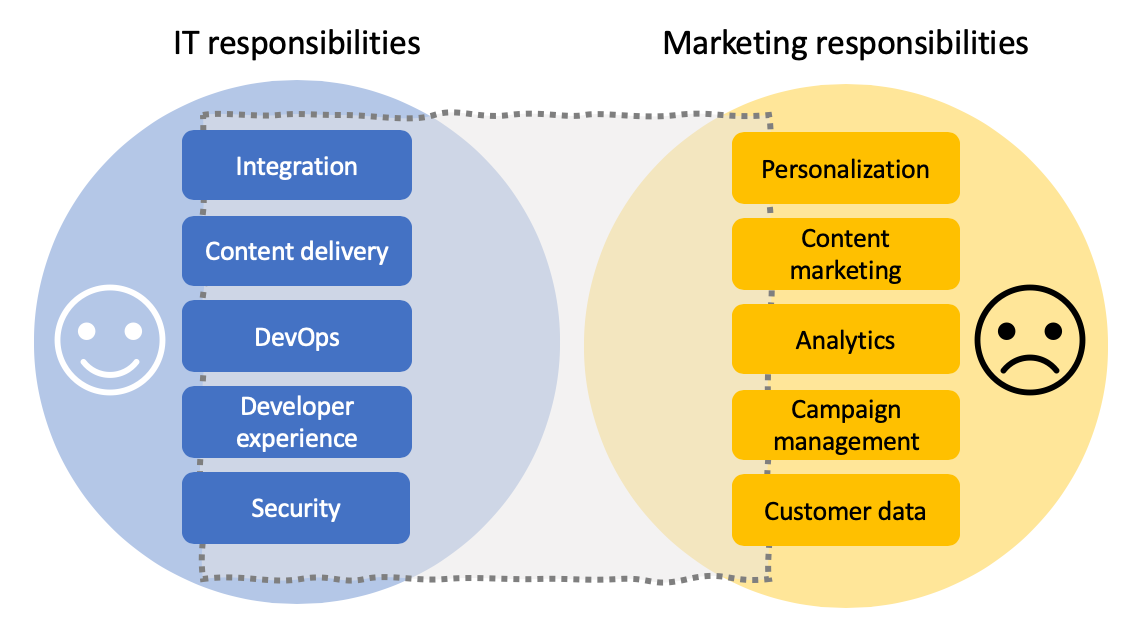
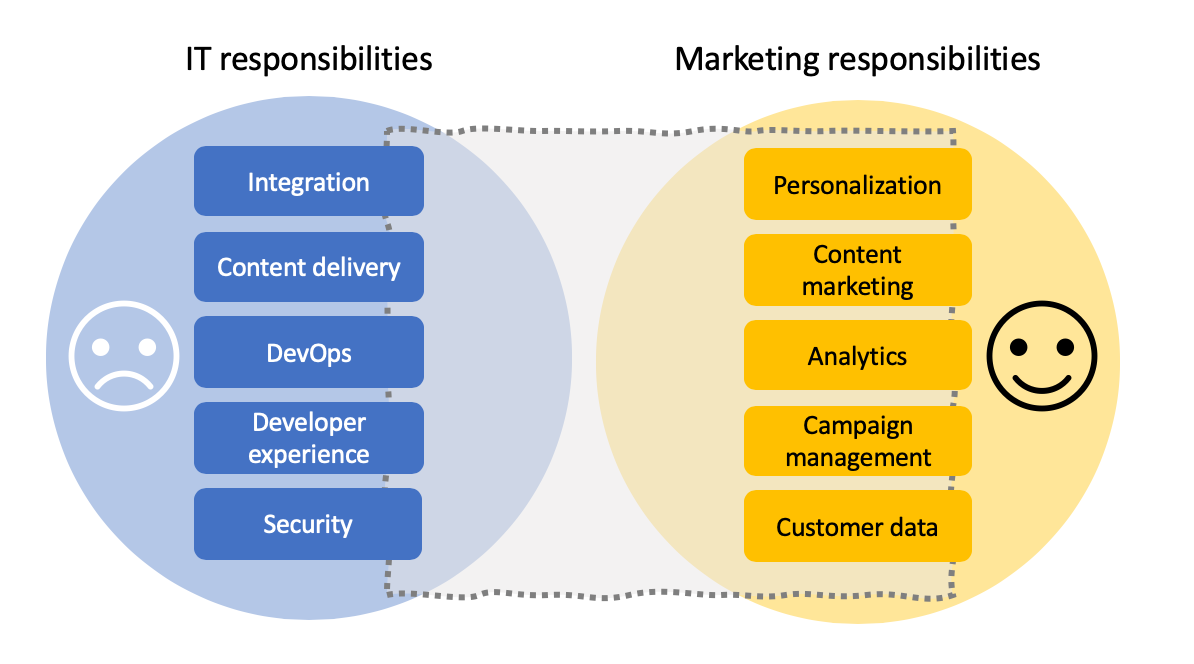
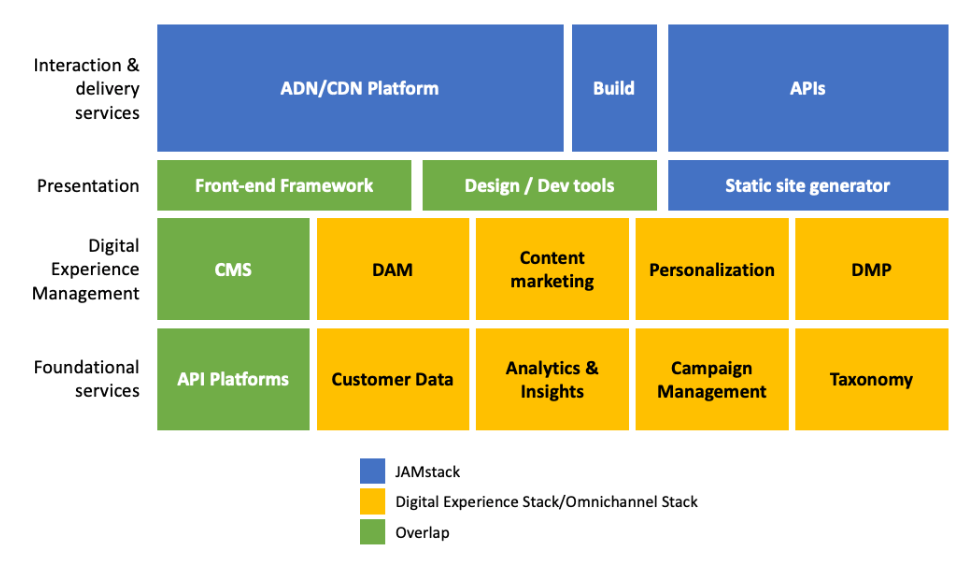
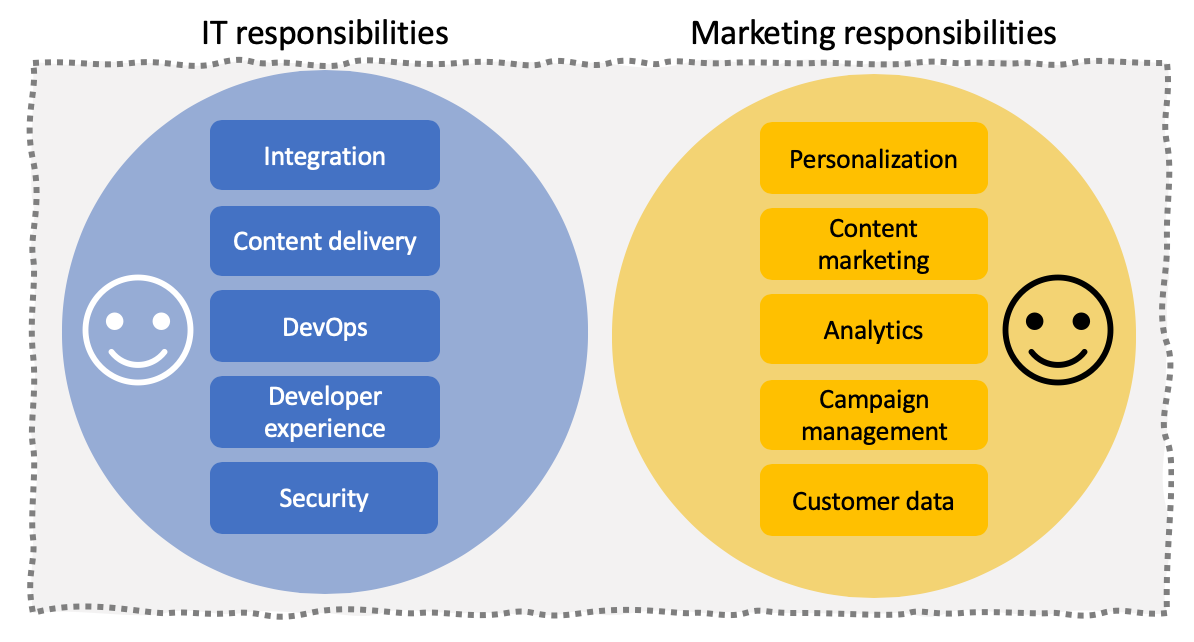
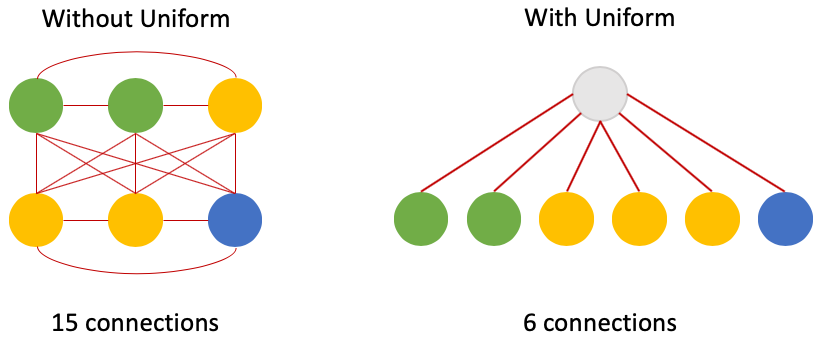
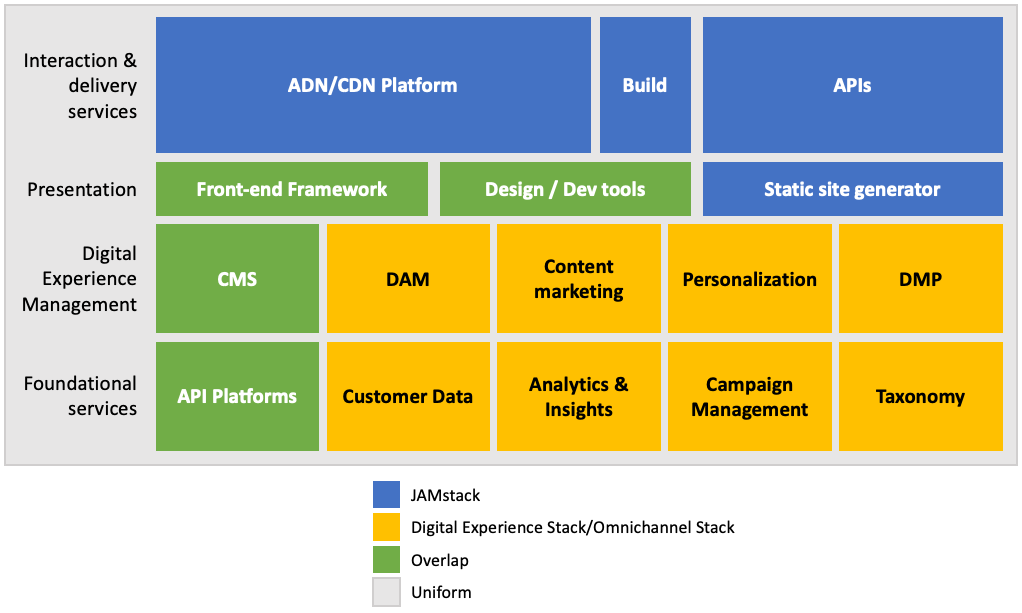
.jpg&w=1024&q=90)

